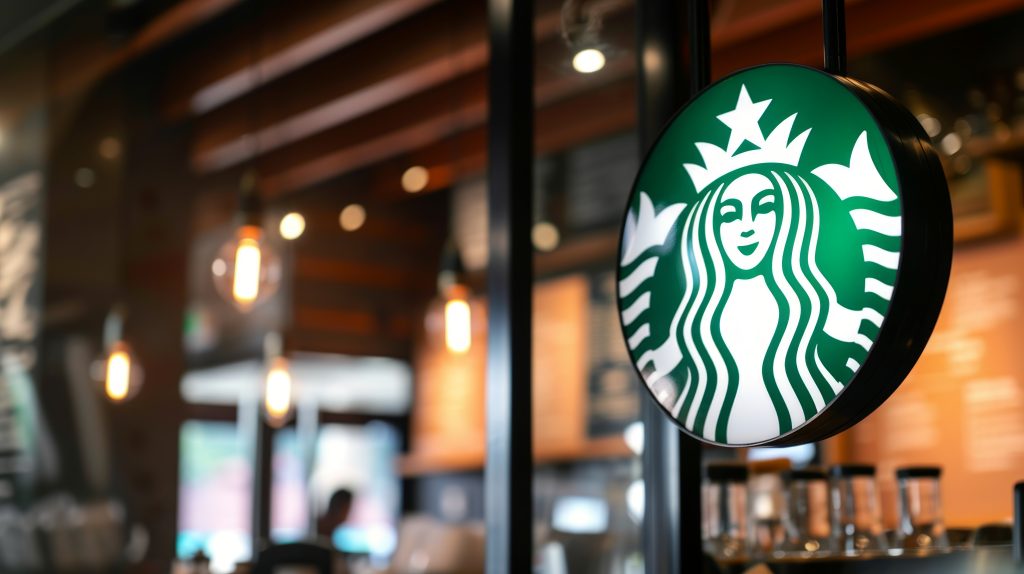Starbucks’ (SBUX) bitter earnings report doesn’t seem to have fazed its investors.
The coffee giant is cutting its full year sales guidance, after posting misses on top and bottom lines for its Q1 earnings. Revenue grew 8% year over year to $9.4 billion, missing analyst estimates of a 10.2% jump to $9.6 billion. Adjusted earnings per share was up 20% to $0.90, also below expectations of a 22.5% jump to $0.93. Shares in after-hours trading popped more than 4%. Morningstar analyst Sean Dunlop told Finance that investors “had priced in worse.”
US same-store sales were a disappointment as well, with 5% growth instead of the 5.73% Wall Street anticipated. Foot traffic was up a mere 1%, while check size went up 4%, both under the estimates. The company now expects fiscal 2024 total revenue growth to be in the range of 7% to 10%, down from the previous range of low end of 10% to 12%. Global and US same store sales are expected to increase 4% to 6%, both down from the previous range of 5% to 7%.
China’s same store sales growth is expected to come in at low single digits for the remainder of the year, down from 4% to 6%. Starbucks expects fiscal year earnings growth to remain the same, in the range of 15% to 20%. Despite the earnings miss, Dunlop said an overall increase in foot traffic seems to suggest the company is still outpacing the industry and “hasn’t wildly outrun its consumer with price increases.” Its loyalty customers also spent a record amount per member this quarter. To increase its US foot traffic, Starbucks plans to introduce three new flavor lines aimed at Gen Z consumers, particularly for afternoon visitors, and new drinks ahead of Valentine’s Day.
On a call with investors, Starbucks’ CEO Laxman Narasimhan outlined “a negative impact” to its business in the Middle East which then in turn “had an impact in the U.S., driven by misperceptions about our position.” Narasimhan shared his concerns about current events and misinformation being spread about the company in an internal memo in mid-December. Overseas, Starbucks’ results were a far cry from its lofty ambitions. It had aimed to grow to 9,000 stores in China, its second-largest market, by the end of 2025.
But same-store sales in China only increased 10% this quarter, falling short of the 16% jump Wall Street expected. While foot traffic was up 21% year over year as COVID restrictions eased, check sizes dropped 9% due to slower sales of higher-priced merchandise “as [Chinese] consumers are more cautious in their spending,” Starbucks China co-CEO Belinda Wong said on the call.
Competition is also brewing in the country as local brands like Luckin Coffee and Cotti Coffee have been aggressive in their pricing strategy. “We are operating under an increased promotional environment [in China],” Wong said, “We’re not interested in entering the price war.” Narasimhan added that Starbucks believes there is “enormous potential in China’s premium market and no one is better positioned to lead in this space.” Starbucks plans to innovate its local menus, up investments in technology, and increase the percentage of new stores opening in lower tier markets.
Overall, international sales jumped 7%, with a decline in average check sizes, but an increase in foot traffic. CFO Rachel Ruggeri said on the call that a slower than expected recovery in China and conflict in the Middle East are “transitory” headwinds, and the company remains committed to international expansion. Globally, Starbucks is aiming to increase its footprint from over 38,000 stores to 55,000 stores by 2030. In Q1, the company opened 549 net new stores.
Following its Q4 results in November, the company announced plans to implement a $3 billion efficiency program over the next three years — $2 billion of which Starbucks says can be saved from the corporate side. It also aims to double workers’ hourly incomes compared to fiscal year 2020 by fiscal year 2025. Prior to the earnings report, shares were down 14% over the past year, compared to the S&P 500’s (^GSPC) 21% gain. Meanwhile, shares of McDonald’s (MCD), which just announced its expansion into the coffee scene with CosMc, are up around 7.3% in the last year.



